RYAN



Still nothing, yet Turdus merula Gardening Wind, Chimes Even in darkness, (Power Outage) Homage to Psycho and Robert Bloch Rubber Band Sculptures Selected Floral Work Selected Display Work
04 08 10 12 14 16 20 22 24
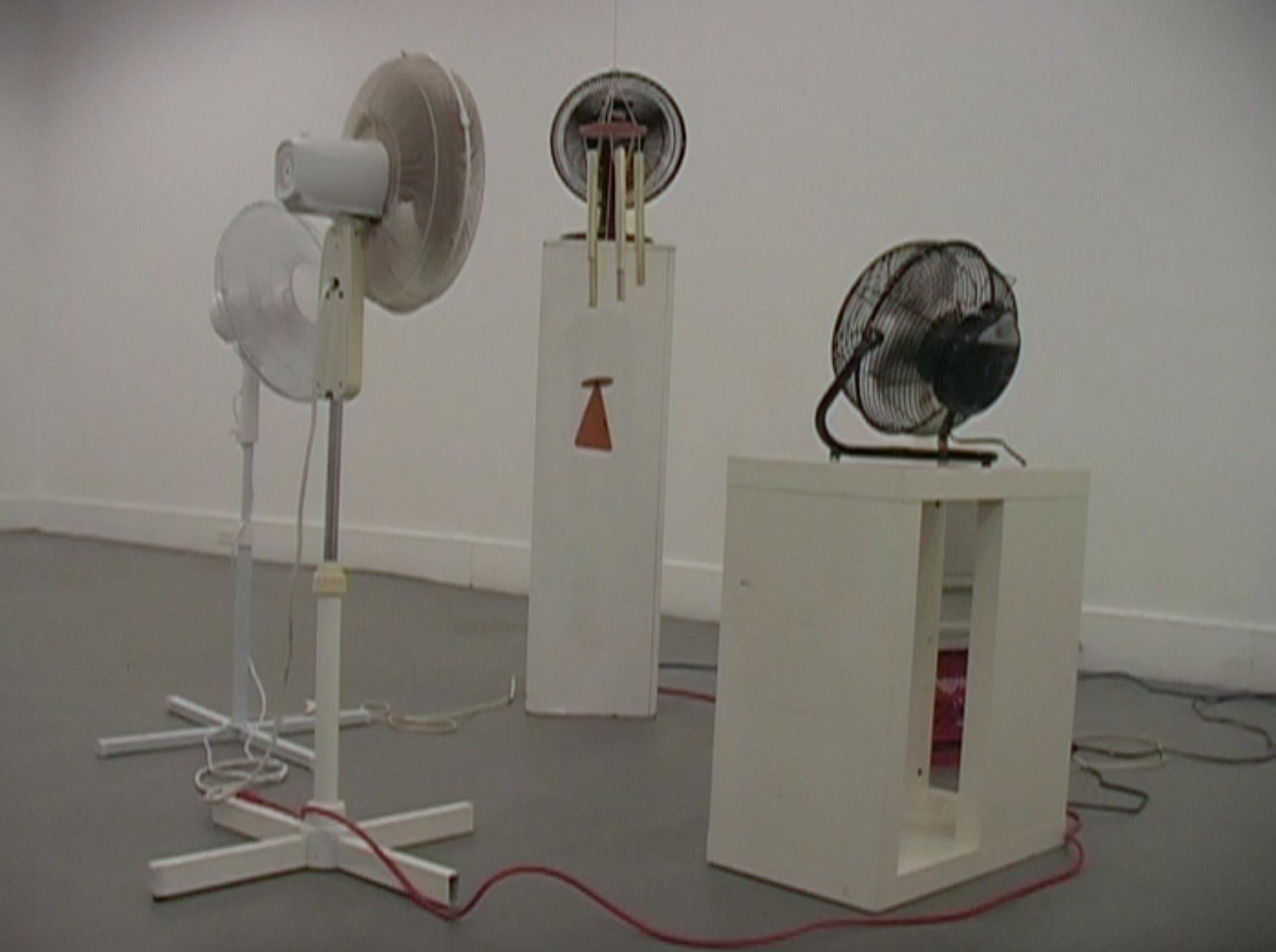

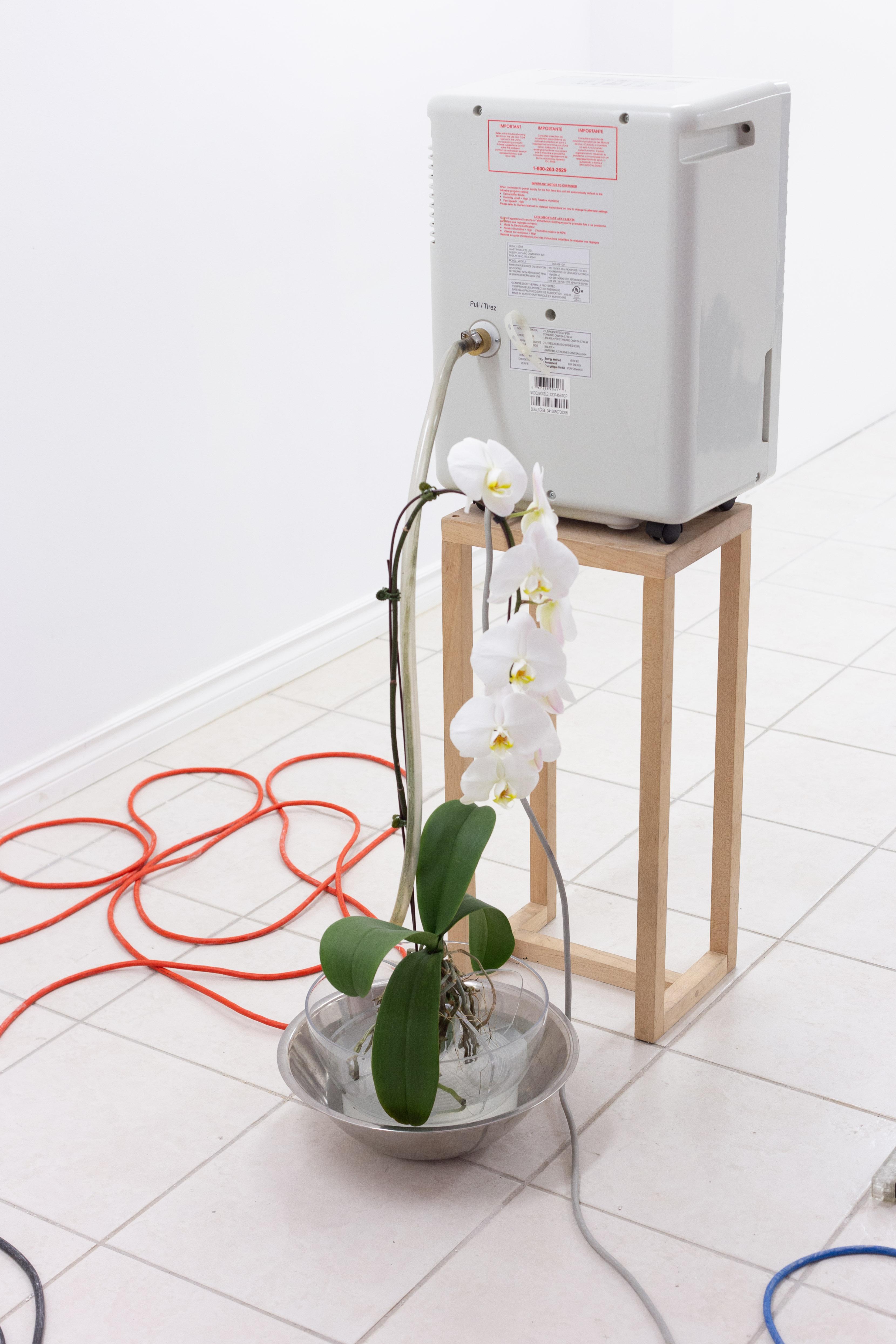


Still nothing, yet was a month-long performative installation, produced for an exhibition titled BLOOMDOOMROOM at the plumb gallery in Toronto. Various pieces of technology and hardware were arranged around an orchid in full bloom. Power supplies were set to varying time intervals with different durations. One timer turned on a hot plate, which in turn boiled a pot of water; another timer turned on a humidifier atop the cardboard box it came in; another, a heat lamp. The moisture created in the air was collected by a dehumidifier, which was set to release absorbed water through the emptying valve and into the bowl where the orchid was situated. Water collected from dehumidifiers can contain heavy metals and bacteria, making it unsafe for human consumption. However, orchids thrive when watered with this mineral-rich water, as it is similar to the water they absorb in their natural environment.


Monitoring the plant through a live-feed camera, I would periodically visit the gallery to maintain water levels in the boiling pot, humidifier, and add growth serum to the orchid water. The gallery itself is situated in a basement, with no natural light. This somewhat pathetic gesture of attempting to artificially sustain the life of the orchid presented the possibility of some profound meaning to emerge. Still nothing, yet was a manifestation of a tense present, amidst a global pandemic and a barrage of terrible news; a futile determination of hopefulness.


BLOOMDOOMROOM was an exhibition about flowering, fruiting, ecological fall-out, late stage environmental capitalism, and art at the end of days; curated by Emma Welch and Daniel Griffin Hunt.


Turdus merula is a European species of thrush commonly referred to as a blackbird. Its North American counterpart of the same family is the Agelaius phoeniceus, also known as the red-winged blackbird. Each of these birds has a distinct vocalization pattern.

The practice of mimicking the song of a bird through a whistle has been around for hundreds of years. These whistles have been used as hunting aids, for bird watching, and as toys and entertainment. The practice of using one’s own vocalization in order to recreate the call of a bird is a rare talent that few have.
For my Extended Practices III Studio, I modified a 10-second clip of bird imitation specialist Tony Durant recreating the vocalization of the common European blackbird, Turdus merula. In repurposing the audio, I created a one-minute sound piece in which a “blackbird” chirps intermittently throughout.
For critique, I installed the audio up in a tree at the University of Guelph’s main courtyard; a central campus location where thousands of people pass through every day. I allowed the piece to play on loop for three days and three nights.

This project was for a two-week assignment about Derivé, which is the technique of consciously passing through a space of varied ambiences. I was interested in art as an intervention in public space and provoking others to reconsider how they interact with liminal spaces. Turdus merula invites wanderers to be cognizant of the psychogeographical effects of their surroundings, as they move through their environment.
I became concerned about the impacts that an endless bird call might have on the ecosystem of the campus, and moved the piece indoors for the 43rd Annual Juried Art Show. I installed the audio at the rear end of the art building, inside a storage closet situated adjacent to an exit, stairwell, and electrical room. The bird calls echoed throughout the hallway leading to the front of the building, and could be heard from the stairwell as well. The judges awarded Turdus merula with the 2nd place prize.
Photo by Andre VieiraIn my Extended Practices II Studio, we were given an assignment about Language and Light. I wanted to explore the language of transitional space. Campus pathways proved to be overlooked and poorly maintained. These spaces were left overgrown and littered with weeds. Positioned on the periphery of focus, I decided to acknowledge these forgotten and mundane areas of campus.

Both sculptural and performative, I planted artificial greenery amongst the overgrown weeds and plants that lined the pathways on campus at the University of Guelph. Not unlike my later project, Turdus merula, I unwittingly toyed with the idea of Derivé. This piece was intended to exist in the world, whether noticed or not. The idea was that some may stumble across the work by chance, others may take note of the unorthodox colour of green, or the vivid white flowers amidst the fall leaves.
Due to restrictions and limitations, this project only existed for a week, but the proposal I produced was intended for the project to be eco-conscious and last a full year. Throughout the changing seasons, the artificial plants would reveal themselves, beckoning acknowledgement and allowing the artwork to be encountered. For a group exhibition, titled L / L, I modified the project, bringing it indoors and planting both real and fake plants in a makeshift box.
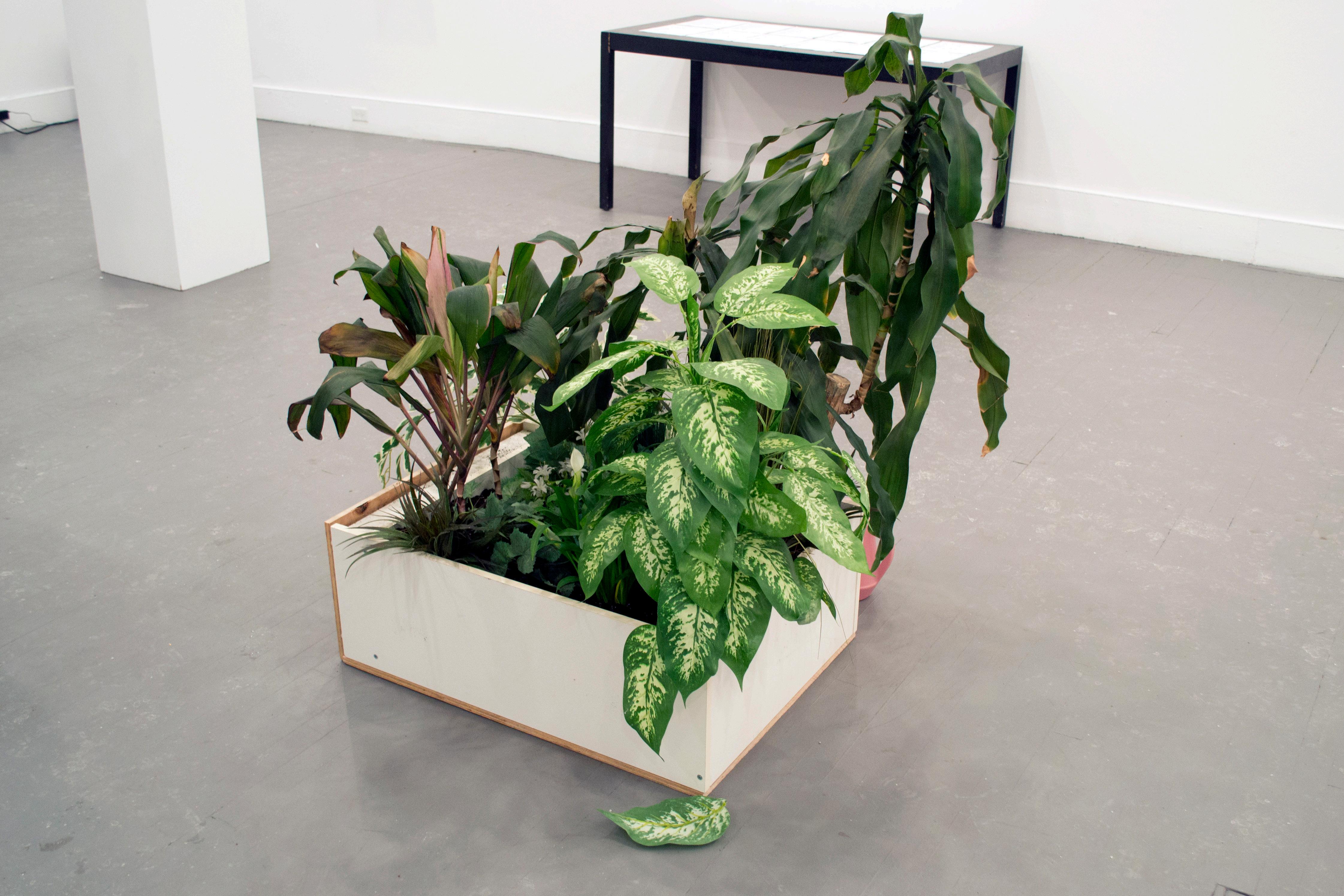
Wind chimes are technically a percussion instrument. Hung outdoors, they are played through the natural movements of air, determined by the currents of wind. This classifies the instrument as a form of aleatoric music, which is music produced with an element of chance, usually as a result of the performer(s).
In my Sculpture III Studio, I was studying the uncanny; the ability for an object to be somehow familiar, yet unrecognizable. I repurposed a set of wind chimes and suspended them at the centre of a group of fans. The chimes become divorced from their original function, and the presupposed sound is assumed by the effect of multiple fans whirring together in monotonous white noise.
(Click on image to open video documentation)



Elie Wiesel famously wrote that “even in darkness it is possible to create light”. In a determination to do exactly that, I installed a television set in a completely dark room. The TV looped through a series of eight still images taken from various films and television programs at the exact moment in which a power outage occurs on screen. The result is a collection of slightly different shades of black. The supposed absence of light on screen becomes the only source of light in the room.



In 1960, Alfred Hitchcock adapted the novel Psycho written by Robert Bloch into the acclaimed horror film of the same title. When Bloch wrote a sequel to his 1959 bestseller, he committed to write it as a critique of Hollywood. Unsurprisingly, Universal Studios rejected his sequel in favour of an original screenplay.
In my Extended Practices II Studio, we were given an assignment about Remakes. For my project, I spent the night at a motel, watching the movie adaptation of Psycho on repeat while converting the film back into a written form. My intention was to undo a remake, creating a remake in the process.
As the project was performative in nature, it only seemed appropriate to film myself and the systematic writing method I employed, which was not unlike a form of methodacting. As a result, I had filmed my own movie of me processing a film, adapted from a book, back into a story.
I watched Psycho five times, and wrote a 5,000 word short story in the process. Akin to the shifting narrative of the film, my short story is written from various character perspectives, allowing readers the omniscient presence instilled in the film. For critique, I displayed my story, accompanied by the 1960 film, and the process video.
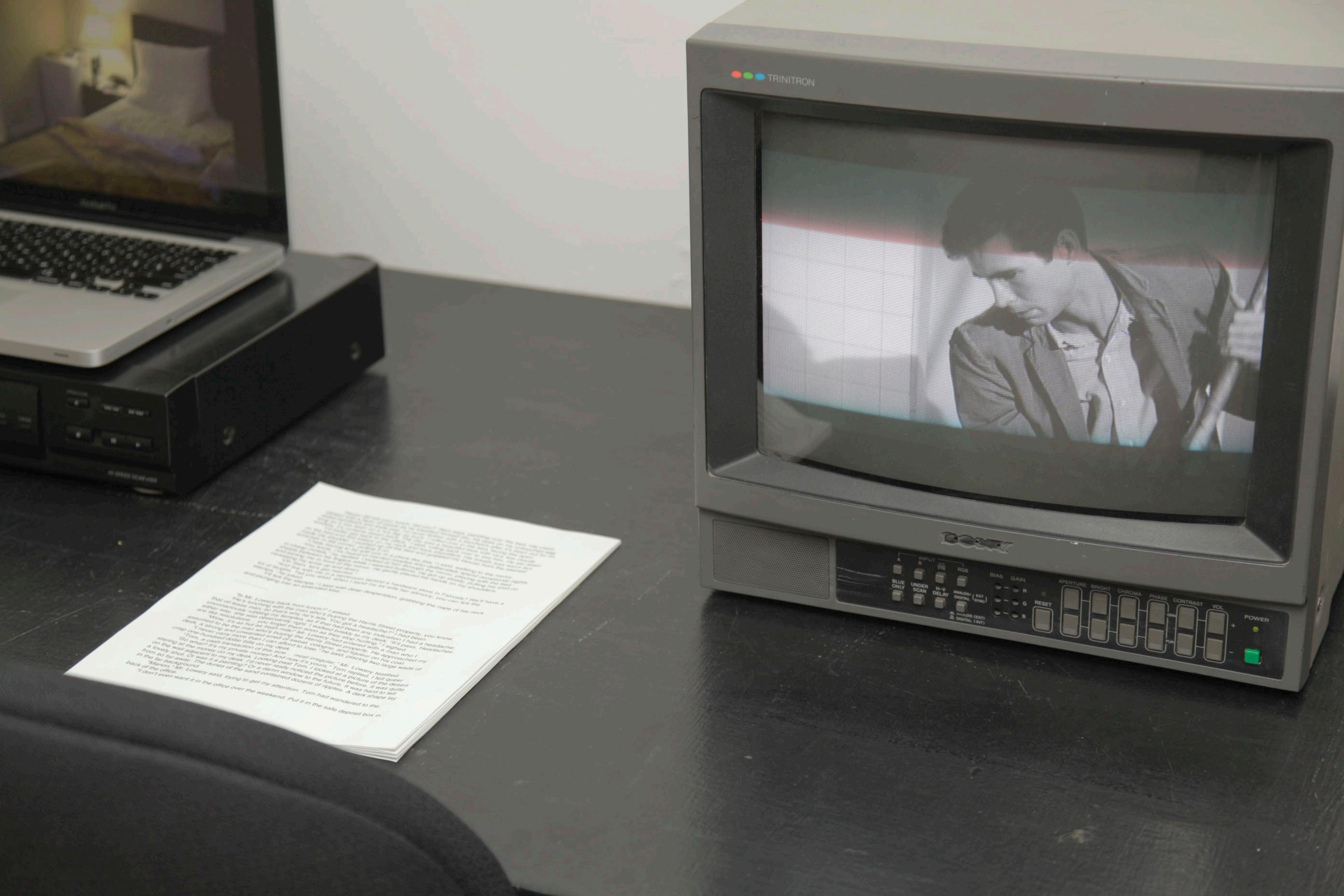


Clutching the tile wall and struggling to stay afoot, my eyelids grew heavy. My fingers slipped back and forth between tile and grout as I slid down into the tub, my wet hair clinging to the wall. The shower continued pulsating water, as if unaware. As my breaths shortened, my eyes fell, transfixed on no where in particular as I reached out for the shower curtain.
I took the stairs two at a time, racing up to the house. Once inside, I walked quietly up to Mother’s bedroom, knowing how she was going to react to our plan. She lay perfectly still on the bed, but spoke with vehemence.
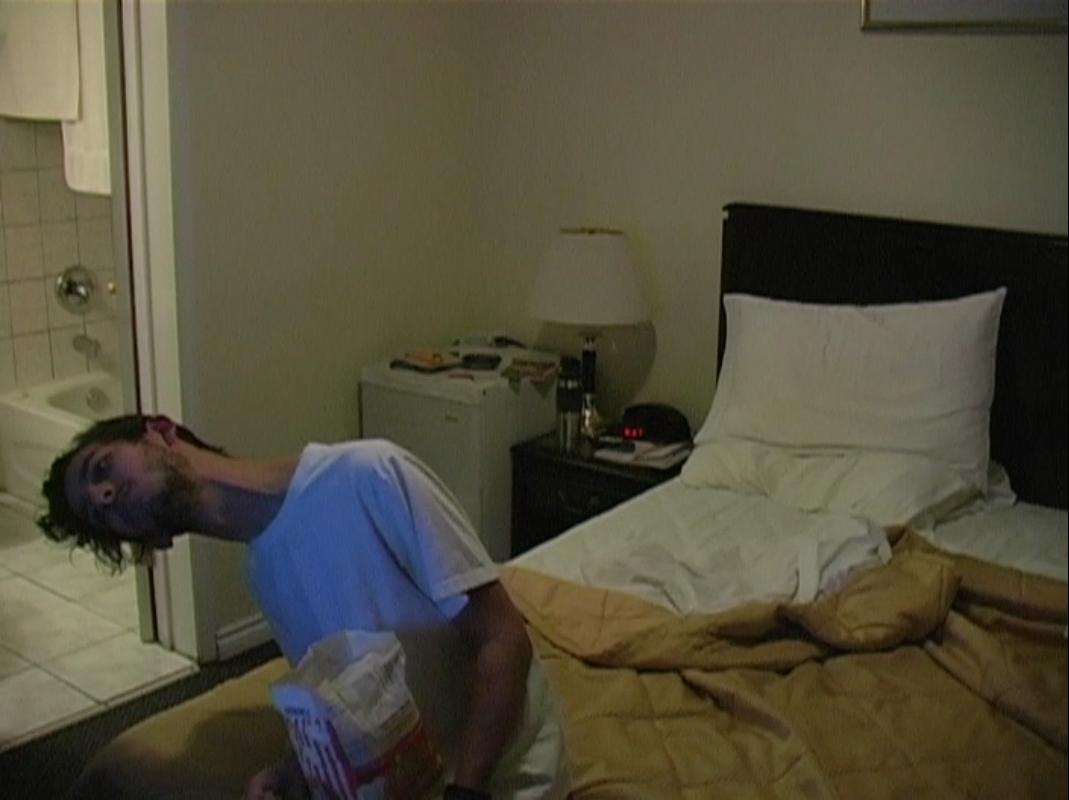



“No! I will not hide in the fruit cellar!” I quipped, cackling at the thoughts turned to words. “Think I’m fruity, huh? I’m staying right here. This is my room and no one will drag me out of it, least of all my big bold son!” I sounded shrill.
“They’ll come now, Mother. He came after the girl and now someone will come after him! Mother, please, it’s just for a few days, just for a few days so they won’t find you.”
“Just for a few days in that dark, dank fruit cellar? No! You hid me there once, boy, and you won’t do it again! Not ever again! Now get out! I told you to get out, boy!”
“I’ll carry you, Mother.” I said, moving closer to her body.
“Norman, what do you think you’re doing! Don’t you touch me, don’t! Norman!”
I swung the cellar door open, revealing a woman sitting in a chair with her back to me. She looked cold and rather motionless, but it must be her. “Mrs. Bates,” I said, stepping down into the cellar. Passing by a hanging lightbulb, I cast a tall shadow across the wall in front of her. Somehow she had neither seen nor heard me. I gently touched her shoulder as her body slowly turned.
A mummified corpse of a woman with sunken eyes sat facing me. Her teeth were pristine but her lips had receded to nothing. Her nose had collapsed in on itself, and her dark, bloodless skin was rippled with valleys. I let out an awful shriek, knocking the hanging bulb into a swinging frenzy. The light danced around on its chain, distorting the shadows of the room. I turned to leave, but a figure moved to block the doorway. It was like seeing a ghost. A young Mrs. Bates stood before me, butcher’s knife in hand, grinning maniacally.
A fly buzzed around my head. They’re probably watching me. Well, let them. Let them see what kind of a person I am. The fly landed on my hand, inspecting the creases around my thumb. I’m not even going to swat that fly. I hope they are watching. They’ll see. They’ll see and they’ll know, and they’ll say, ‘why, she wouldn’t even harm a fly.’
In my Sculpture I Studio (2013), we were asked to explore the materiality of a modular object. Rubber bands were an appealing choice due to the nature of their flexibility and the ability to weave them together without the use of another material.
I created a long string of elastics and began testing the material in different settings before realizing the physics in the simplicity of letting the elastics hang, tethered only at either end.
The result was a parabola, which could be plucked at, but would always return to its resting position. Knotting a balloon at the vertex and fastening a bucket to the floor, people were invited to interact with the rubber band sculpture. The balloon would dance around as a result of kinetic waves carried through the elastics. As the waves dissipate, the balloon would return to its resting position, perfectly inside the bucket.


In my Sculpture II Studio (2014), I continued with my interest in the materiality of rubber bands. Incorporating them into a project in which we were asked to utilize our skills in the metalshop, I welded a 7’ tall geometric archway and painted it the same colour as the rubber bands. Using the elastics from my Sculpture I Studio, I suspended the steel archway upright between two trees, using the tension of the rubber bands to keep the sculpture in place.
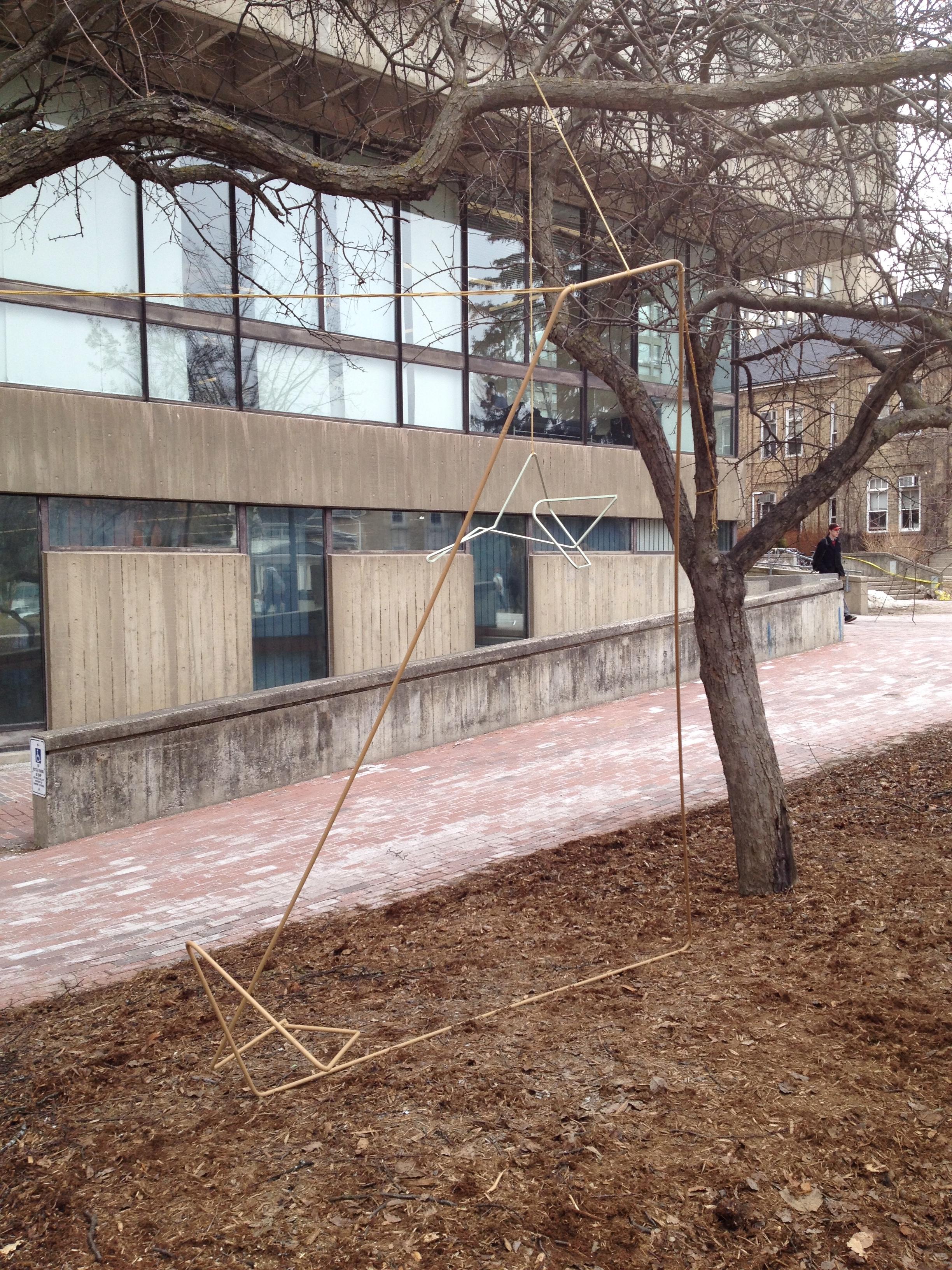
Working at Euclid Farms, I created original bouquets and arrangements using both fresh and dried flowers. We also sold cloches, which are small sculptural arrangements of dried flowers enclosed within a glass fixture. My boss and colleagues often referred to me as ‘the cloche-master’, as I took special interest in creating an array of dynamic compositions, each with their own narrative.
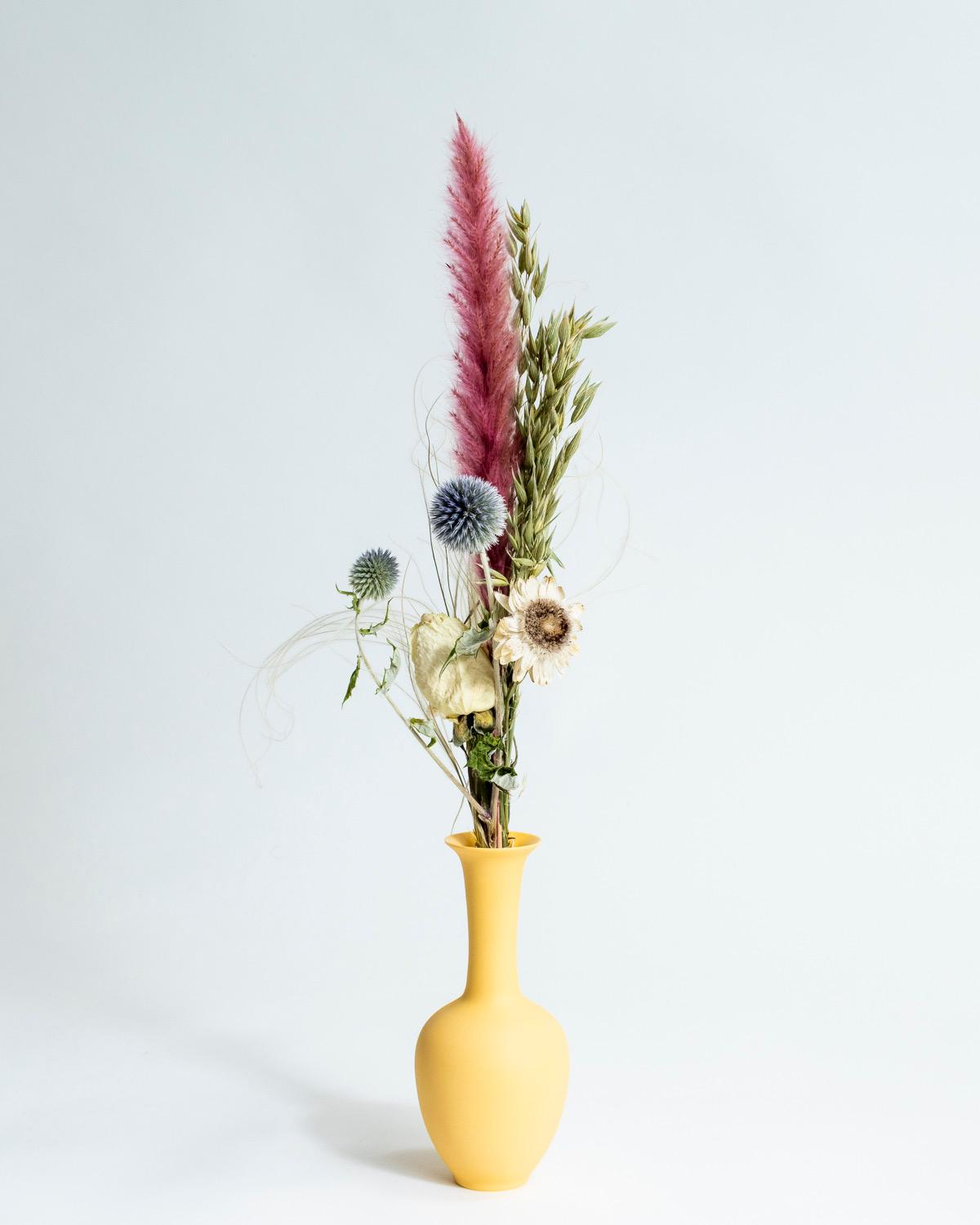
Photographs by Kyle David Phillips.


In 2016, I began work at the retail store Urban Outfitters, at Square One in Mississauga. Starting as a sales associate, I was promoted to Display Artist (DA) within my first year. The store at Square One had never had a DA before, so there was a lot of opportunity for the space to be updated. I built out walls, constructed all new fixtures for the sales floor, and was responsible for executing the creative direction from head office.
DA’s work closely with the store Merchandiser four times a year to collaborate on Floorset, which coincides with the back-to-school, holiday, spring, and summer seasons. While Merchandiser’s are responsible for merchandising the product, the DA is responsible for new builds, fixture construction, graphics, window vinyls, and all other display elements.
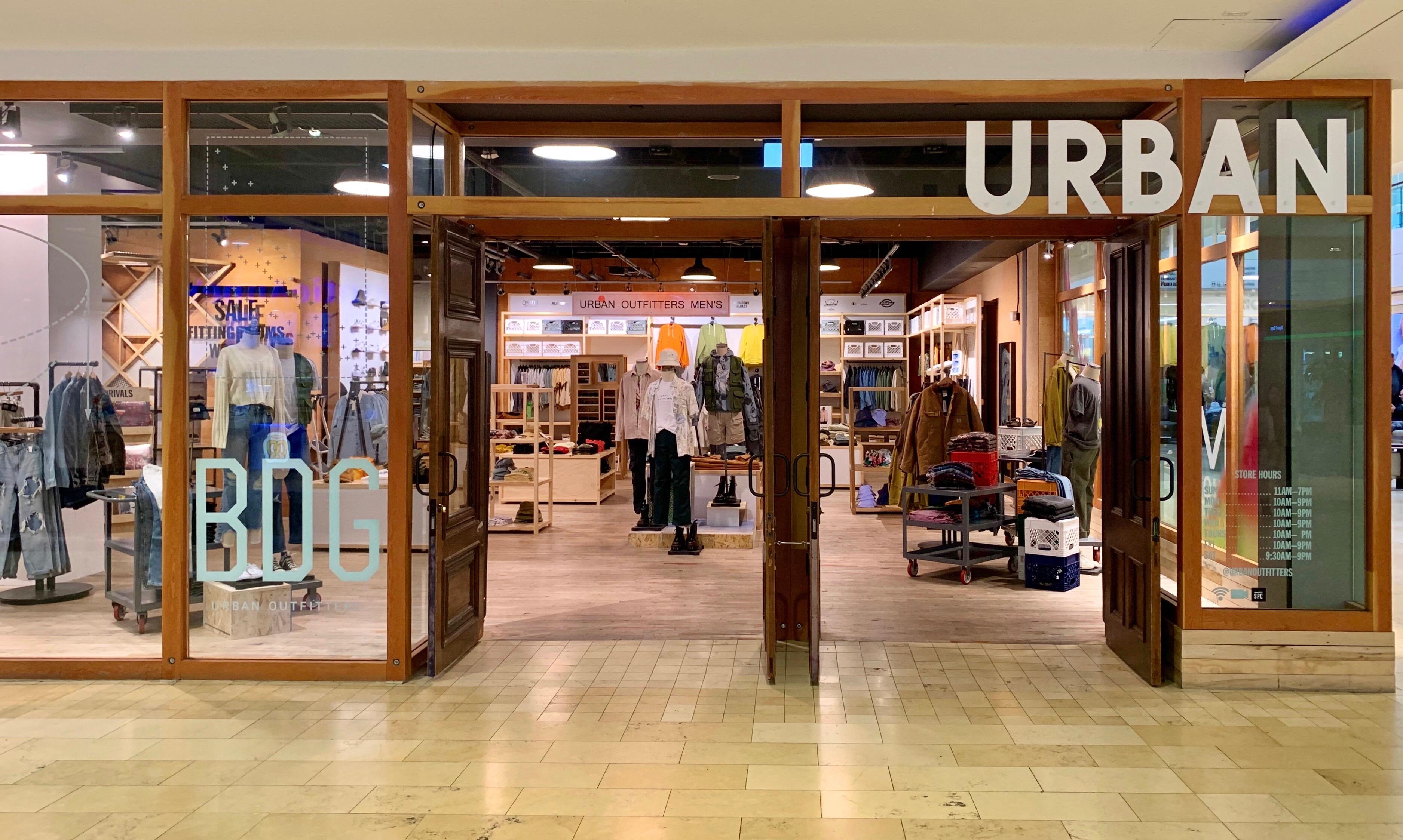



Display Artists use their visual expertise to translate the creative concepts from the corporate level into the context of their store. The DA works independently on design plans and budgets, collaborating only with the merchandiser to decide the overall execution of the visual displays.
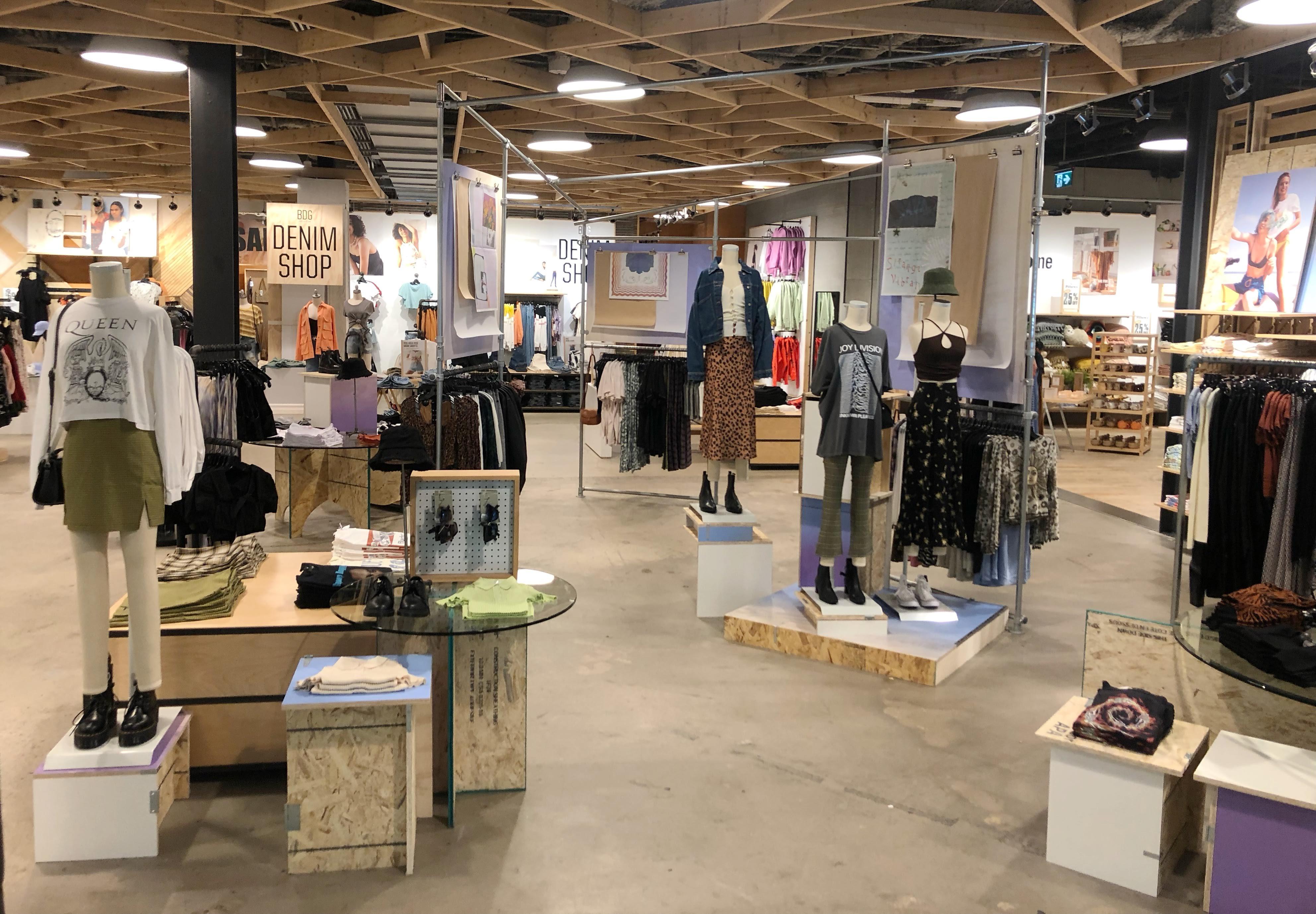
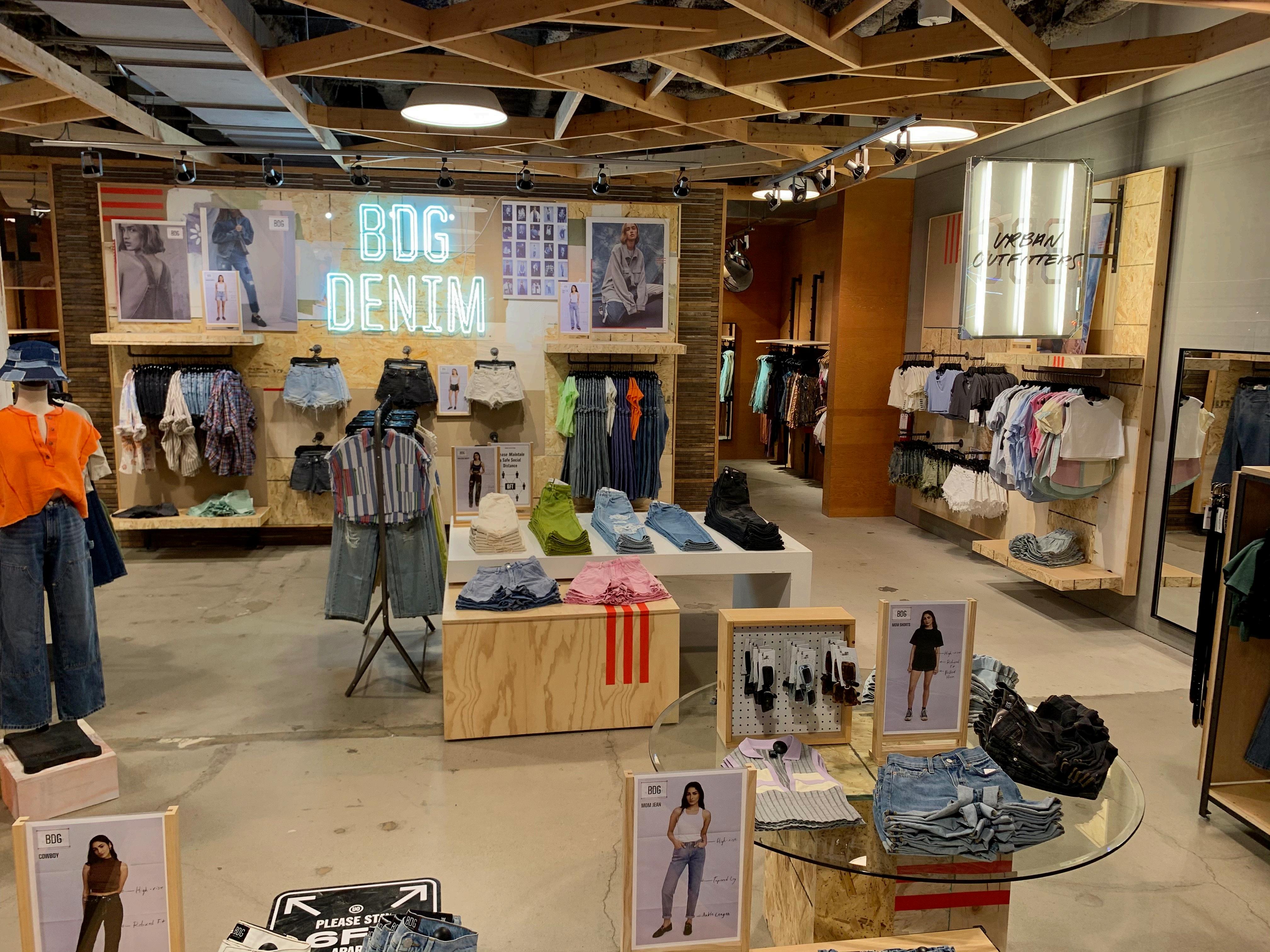
Working in a woodshop setting, I became proficient with power tools, as well as with a wide array of materials including: MDF, Plexiglass, hardboard, plywood, drywall, conduit, and the installation of LED and neon lights.

In 2018, our store was approved for a Mens update to expand the Seasonal Shop wall with the goal of anchoring the Mens section. Over the course of a few weeks, I measured out and budgeted the specifications to expand the wall. Using standard guidelines from head office, I modified the designs to fit the space of my store. Once completed, the new design contributed to a 100% increase in sales when compared to the previous year.

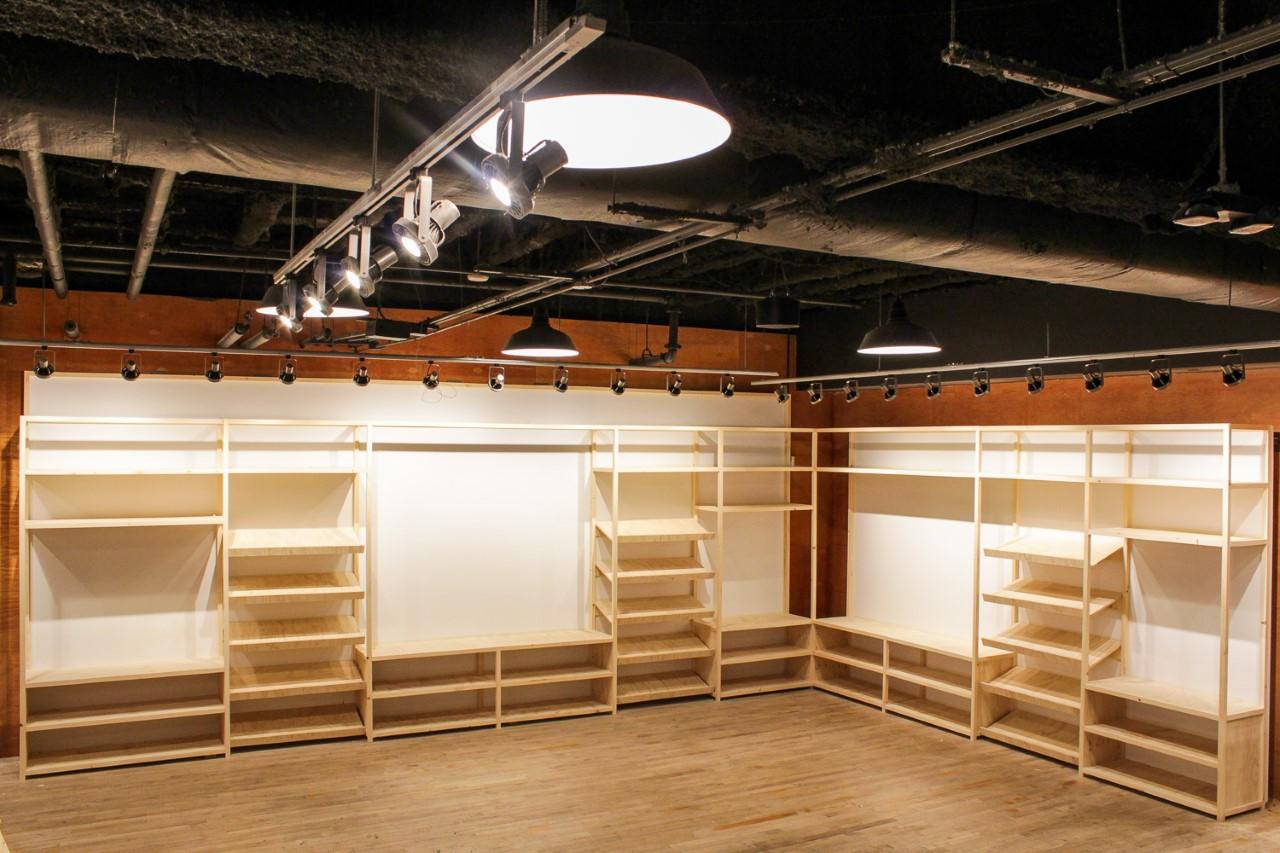


Thank you for your consideration.
- Ryan